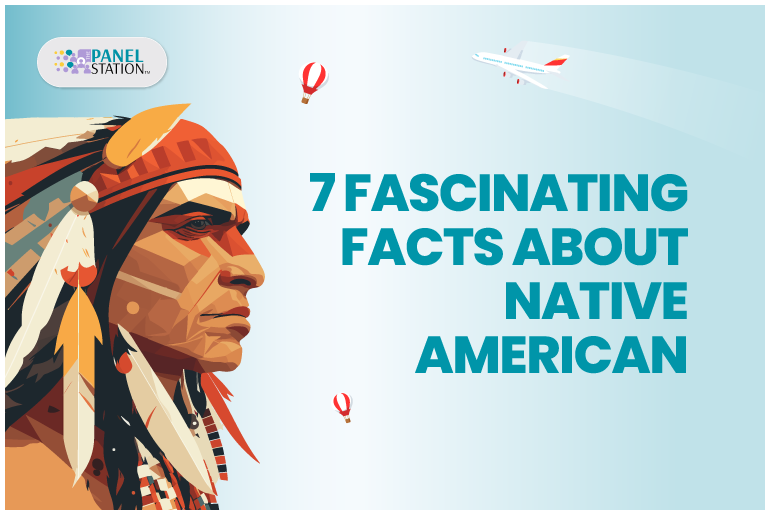Native American heritage is like a rich, intricate tapestry woven over thousands of years, filled with vibrant colors and stories that continue to resonate today. This journey through time is not just a look back at history but a celebration of a culture that has survived thrived, and contributed immensely to the world we live in today. So, let’s take a stroll through the ages to explore the 7 fascinating facts of Native American heritage.
The First Environmentalists
Long before “going green” was a thing, Native Americans were the OG environmentalists. They lived in harmony with nature, understanding the importance of balance and sustainability. Whether it was using every part of the buffalo, rotating crops to preserve soil health, or practicing controlled burns to manage forests, their methods were all about respecting and nurturing the Earth. They didn’t just live off the land; they lived with it, setting an example that’s more relevant today than ever.
The Iroquois Confederacy: America’s First Democracy
Did you know that one of the earliest forms of democratic government in North America came from Native Americans? The Iroquois Confederacy, also known as the Haudenosaunee, was a powerful alliance of six nations with a sophisticated political system. Their Great Law of Peace emphasized unity, shared decision-making, and the importance of women in leadership roles. This model of governance even inspired the framers of the U.S. Constitution. Talk about a legacy that stands the test of time!
Chewing Gum, Native American Style
Think chewing gum is a modern invention? Think again! Native Americans were popping nature’s bubble gum long before Wrigley came along. As a part of their indigenous culture, they made their gum from the sap of spruce trees, which freshened breath but also had antibacterial properties. So, while we were busy with our fancy electric toothbrushes, Native Americans maintained oral hygiene with tree sap.
Corn: The Original Superfood
Before quinoa and kale became the darlings of the health food world, Native Americans had already mastered the art of cultivating corn, or maize. This golden grain wasn’t just a food staple—it was the foundation of entire civilizations! The Three Sisters—corn, beans, and squash—were grown together in a genius agricultural system that provided balanced nutrition and ensured soil fertility. Talk about a crop that’s got it all! So, the next time you’re enjoying popcorn at the movies, remember you’re munching on a snack with some serious ancient roots.
Powwows: The Ultimate Cultural Mashup
Think of a powwow as the original cultural festival—a lively gathering where Native American communities come together to celebrate their heritage through dance, music, and art. In Native American history, these events are a vibrant mix of tradition and community spirit, where participants don colorful regalia and showcase intricate dance moves to the beat of traditional drums. It’s a feast for the senses and a powerful reminder that Native American culture is alive, dynamic, and full of energy!
More Than 300 Languages Spoken
Before colonization, Native Americans spoke over 300 languages across North America. However, assimilation policies, like President Grant’s push to replace these “barbarous dialects” with English, led to the loss of many of these languages. Children were sent to boarding schools where English was enforced, and communities were displaced onto reserves. It wasn’t until the Indian Education Act of 1972 that tribes were allowed to teach their native languages again. Today, while 169 Native languages still exist, most are at risk of vanishing by 2050.
Bison: The Four-Legged Supermarket
In many Native American tribal traditions, the bison was like a one-stop shop on four legs. This majestic animal provided everything from food to clothing, tools, and shelter. Not a single part of the bison went to waste—hides were turned into teepees, bones into tools, and the meat was a crucial food source. The relationship between Native Americans and bison was one of respect and sustainability, a perfect example of living in harmony with the natural world.
Food for Thought: The Native American Culinary Legacy
Speaking of food, did you know that about 60% of the foods eaten worldwide today were developed by Native Americans? Can you think of Italian cuisine without tomatoes, Irish dishes without potatoes, or any cuisine without chocolate? All these and more were cultivated by indigenous Americans.
So the next time you’re munching on corn on the cob, savoring some maple syrup, or enjoying a turkey sandwich, remember: you’re tasting thousands of years of Native American agricultural innovation. Bon appétit!
Conclusion: A Journey Worth Taking
So, what’s the takeaway from this journey through Native American heritage? It’s that this culture is not a relic of the past but a living, breathing part of the present. It’s a culture that has faced incredible odds and emerged with its spirit intact. Whether you’re visiting a museum, attending a powwow, or simply taking the time to learn about the history, exploring Native American heritage is a journey worth taking. It’s a journey through time that reminds us of the beauty, resilience, and enduring legacy of the first peoples of America. And honestly, who wouldn’t want to learn from a culture that figured out how to live harmoniously with nature while the rest of us were still trying to invent the wheel?






